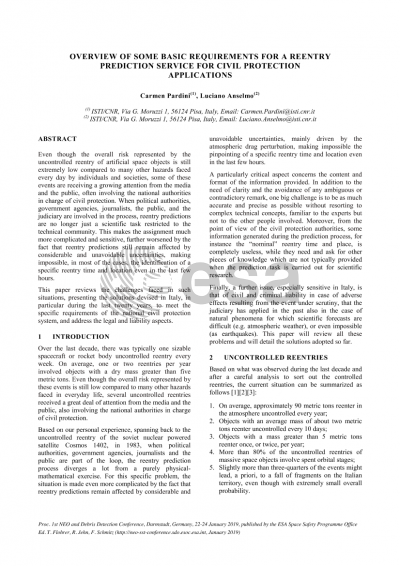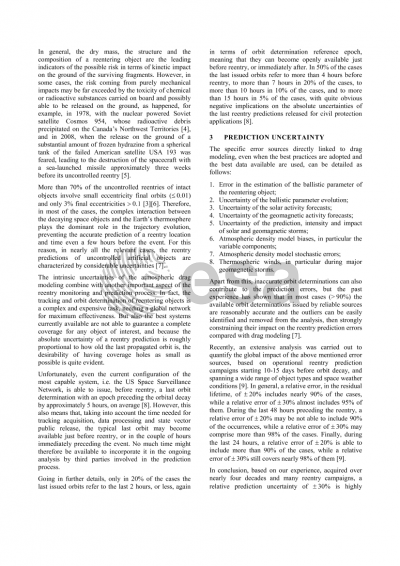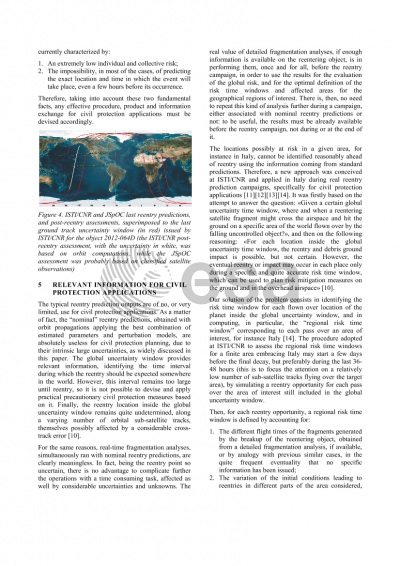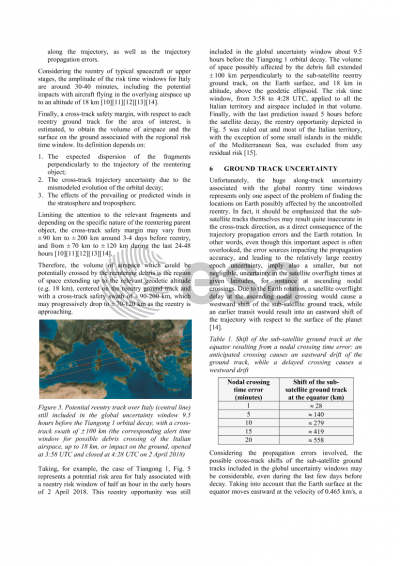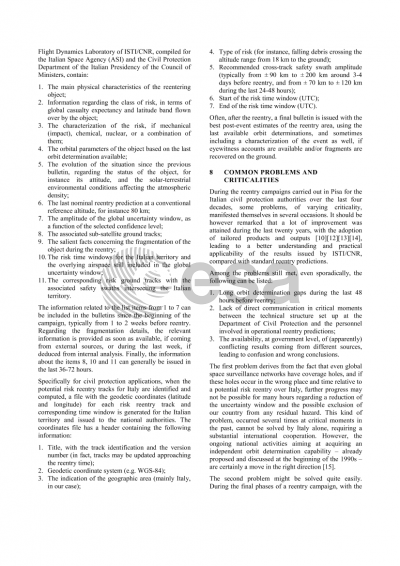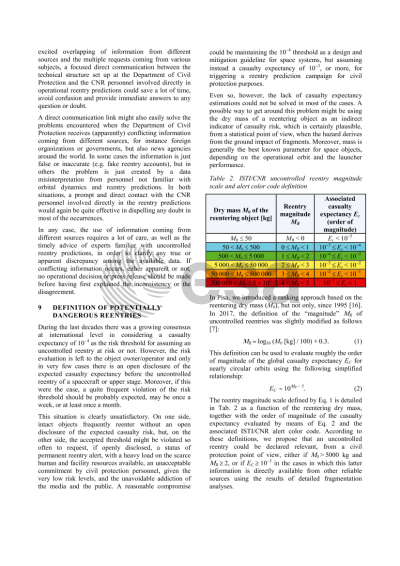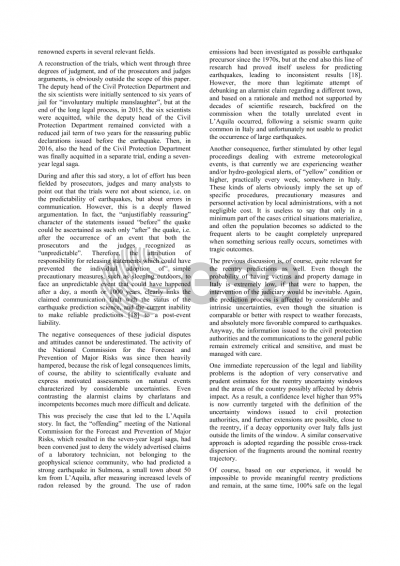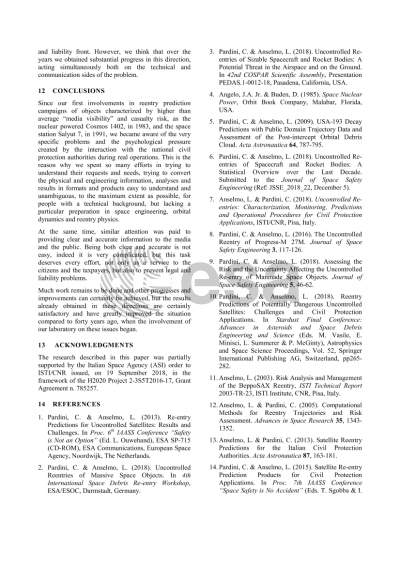Document details
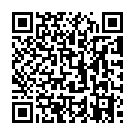
Abstract
Over the last decade, there was typically one sizable spacecraft or rocket body uncontrolled reentry every week. On average, one or two reentries per year involved objects with a dry mass greater than five metric tons. Even though the overall risk represented by these events is still low compared to many other hazards faced in everyday life, several uncontrolled reentries received a great deal of attention from the media and the public, also involving the national authorities in charge of civil protection. Based on our personal experience, spanning back to the uncontrolled reentry of the soviet nuclear powered satellite Cosmos 1402, in 1982, when political authorities, government agencies, journalists and the public are part of the loop, the reentry prediction process diverges a lot from a purely physical-mathematical exercise. For this specific problem, the situation is made even more complicated by the fact that reentry predictions remain affected by considerable and unavoidable uncertainties, mainly driven by the atmospheric drag perturbation, making impossible the pinpointing of a specific reentry time and location even in the last few hours. A particularly critical aspect concerns the content and format of the information provided. In addition to the need of clarity and the avoidance of any ambiguous or contradictory remark, one big challenge is to be as much accurate and precise as possible without resorting to complex technical concepts, familiar to the experts but not to the other people involved. Moreover, from the point of view of the civil protection authorities, some information generated during the prediction process, for instance the “nominal” reentry time and place, is completely useless, while they need and ask for other pieces of knowledge which are not typically provided when the prediction task is carried out for scientific research. Finally, a further issue, especially sensitive in Italy, is that of civil and criminal liability in case of adverse effects resulting from the event under scrutiny, that the judiciary has applied in the past also in the case of natural phenomena for which scientific forecasts are difficult (e.g. atmospheric weather) or even impossible (as earthquakes). This presentation will review all these problems and will detail the solutions adopted so far.
Preview
